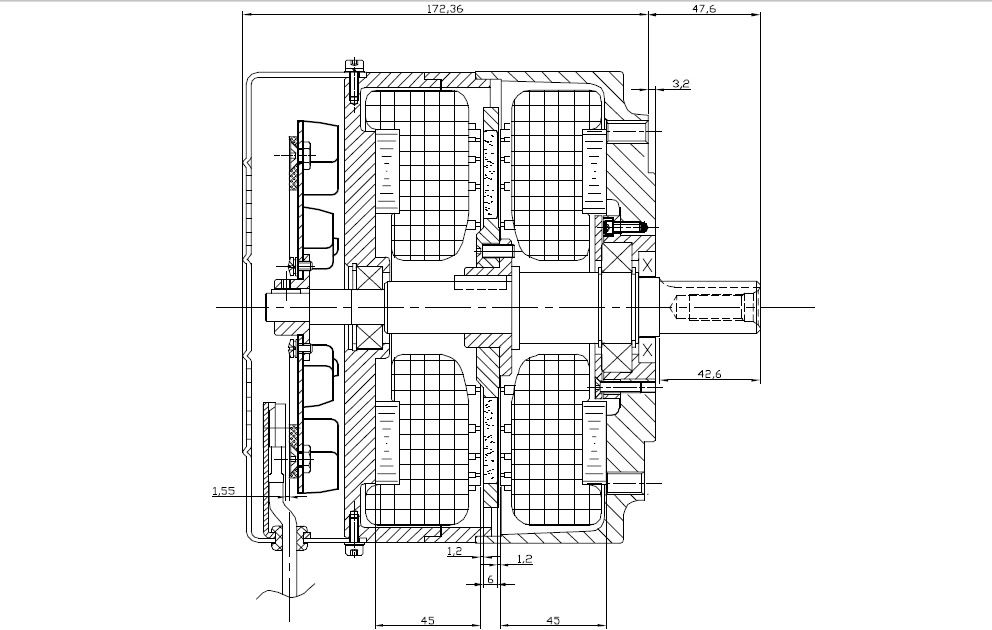Covering some real ground
With the full battery pack and a instrumentation package up and running, we are now going for longer drives. Yesterday, we covered over 10 miles on a single charge.
The charging system is working great. Two charges, both tied to the 220V input. One is the 1500W 91V Lithium Ion charger for the drive battery and the other a 120W 12V charger for the system battery. Since both are automatic, they shutoff independently when charging is complete. I have the 220V outlet on a timer just to be safe.
Instrumentation Pack
Here is a the roughed-out instrumentation pack. This will be mounted behind the dashboard once it is installed.
1) On the left are 4 CellLog8M battery monitors. These are set to alarm if any of the individual cells go out of range. Currently I have them set tightly at [3.0V - 3.6V]. Charging is set to 91V which should be 3.5V/cell on average, so any major drift will be detected. The cells have sagged below 3.0V on a recent hill climb, but recovered to 3.2 very quickly once the road leveled off.
2) The top-right rectangular LCD is one Arduino Uno which is connected via the CAN Bus to the Kelly Controller. It monitors:
- Top Row: RPM, Battery Pack Voltage, Controller Temperature
- Bottom Row: Drive/Reverse, Calculated Speed (Assuming 2nd Gear for now), Motor Amps, Motor Temperature
3) The lower LCD is another Arduino which is measures battery current through a 600A/75mV shunt. It is power separately from the drive battery pack via a 12V adapter. This keeps the battery system isolated from the rest of the car's 12V electrical system. This Arduino is always on and maintains a running count of the amp-hours consumed. The shunt is installed at the battery negative terminal to eliminate noise from the motor and to allow for monitoring charge going into the battery from either the charger or from the motor's regeneration braking.
In a quick experiment, after a 5 mile drive, I then connected the charger. The Amp-Hour counter returned to within 3% of full. Please note, I have not calibrated the system yet, so this is very promising. The system is using an Analog Devices AD8210 Shunt monitor to measure the voltage drop across the shunt. It is wired with a split-supply configuration, so 0 Amps = 2.5V going into the A/D on the Arduino. This setup should yield about 1A precision on counting amp-hours. Given the 20% DoD (depth of discharge) limit, this should provide plenty of margin.
Controller settings
Now that there is decent current monitoring, we tweaked the Kelly KHB72701 controller settings a bit to see if there is a bit more power available. During the drives yesterday, The battery current never exceeded 200A and the motor current peaked at about 300A. The spec on the motor is a max of 420A for 1 minute and the batteries should be capable of 400A-600A for short bursts since they are 60AH packs and there are several reports of people safely pulling 8C-10C. Batteries are rated in terms of multiples of the AH measurement, so a 8C battery can deliver 8x60AH for a short burst.
With motor blower providing plenty of cooling, he motor's temp peaked about 55C.
New Settings:
- Throttle Range 5%-80% (this is a mapping to the mechanical throttle position).
- Max Motor Current 90% (this is of the controller max of 700A --> 455A)
- Max Battery Current 100% (700A)
- Undervoltage (Controller will start to cut back power draw at 110% of this value): 68V (cut-back at 74.8V, or 2.87V)
- Overvoltage (Controller will limit regeneration if voltage exceeds this): 90V
- Throttle Ramp: 4 (How fast it will ramp up acceleration)
- Regeneration: Off
Off for another test drive to the grocery store....


